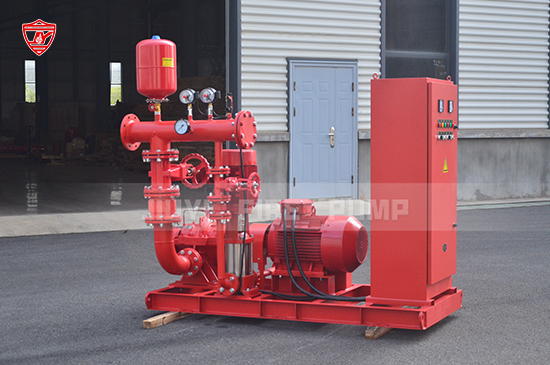Fire pump inspections are critical for maintaining the reliability and compliance of your fire protection system. Authorities Having Jurisdiction (AHJs) and insurance providers often require periodic inspections in line with NFPA 25 standards to confirm that your fire pump is in working condition and ready to perform in an emergency.
Failing an inspection can lead to costly re-inspections, citations, or even compromised fire safety. In this guide, we outline the steps you can take to properly prepare your fire pump system for a successful inspection.

The first step is to identify the standards your system must meet. The most commonly referenced code is:
NFPA 25 – Standard for the Inspection, Testing, and Maintenance of Water-Based Fire Protection Systems
Other applicable references may include NFPA 20, local fire codes, and insurance company guidelines. Check with your AHJ for specific local requirements.
Have the following documents ready and up-to-date:
Fire pump installation manual and datasheets
Past inspection and maintenance reports
Weekly/monthly/yearly test records (as required by NFPA 25)
Pump performance curves and original commissioning report
Controller logs and diesel engine service logs (if applicable)
These documents demonstrate your ongoing compliance and maintenance practices.
Inspect your fire pump room and system before the official inspection:
Is the pump room clean, dry, and well-lit?
Are all valves open and properly labeled?
Is there no visible corrosion, leakage, or damage?
Are controllers free of fault indicators or alarms?
Is the pump base aligned and vibration-free?
The inspector will evaluate these areas first, so they should be in top condition.
Each component must be inspected to confirm operational readiness:
Pump: Check for leaks, unusual noises, or signs of wear.
Suction and discharge piping: Ensure it's clear and well-supported.
Pressure gauges: Must be functional and calibrated.
Relief valve (if present): Confirm it's set correctly and not blocked.
Jockey pump: Test for automatic pressure maintenance.
Diesel engine system: Check fuel level, battery charge, and coolant levels.
Electric motor system: Ensure correct power supply and clean terminals.
Controller: Verify all lights, alarms, and settings are correct.
You may be required to perform an operational or flow test during inspection. Key steps include:
Start the pump manually and automatically.
Verify pressure readings at no flow, rated flow, and 150% flow.
Confirm pressure remains stable with no surging.
Observe controller response, jockey pump behavior, and alarm activation.
Check that discharge matches the fire pump curve specs.
Keep results documented for the inspection report.
Make sure the pump room and components are:
Easily accessible without obstruction
Properly labeled with signs, arrows, and valve IDs
Equipped with emergency lighting (if required)
Maintained at safe temperatures for diesel and electric systems
Accessibility is often overlooked but frequently cited during inspections.
Inspectors often ask facility staff about fire pump operation. Ensure at least one person on-site can:
Start the fire pump
Explain basic functions and alarms
Locate and open/close main valves
Provide documentation on request
Simple preparation can prevent confusion and delays.
Preparing your fire pump system for inspection is a combination of proactive maintenance, documentation readiness, and operational testing. By following NFPA 25 guidelines and ensuring everything is clean, labeled, and functional, you greatly improve your chances of passing inspection without issues.
A successful inspection not only ensures compliance—it also confirms your building’s fire protection system is ready when it matters most.